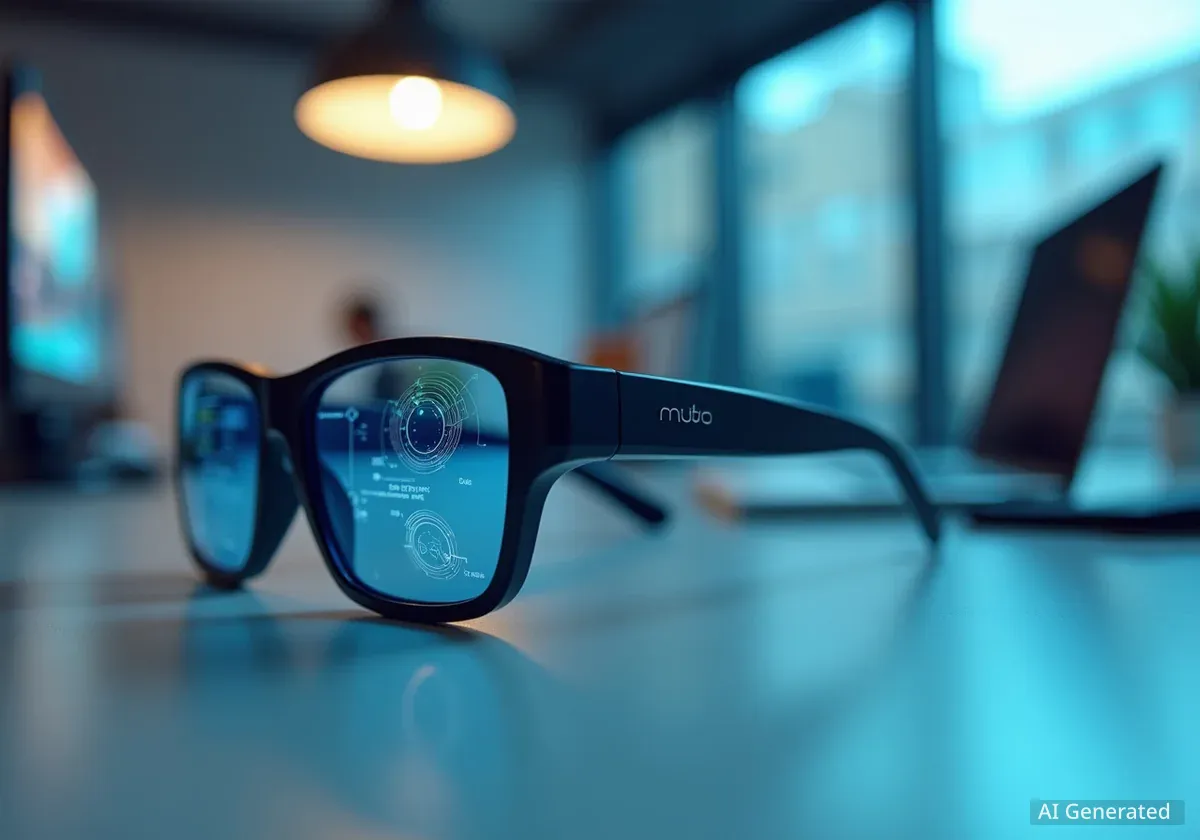Apple is recalibrating its strategy for wearable technology, reportedly pausing development on a next-generation Vision Pro headset to prioritize a new line of artificial intelligence-powered smart glasses. This strategic shift involves reallocating personnel and resources to accelerate the development of products designed to compete directly with offerings from Meta Platforms.
Key Takeaways
- Apple is reportedly halting work on a more affordable successor to the Vision Pro headset.
- The company is shifting its focus and reassigning employees to a new AI smart glasses project.
- Two distinct smart glass models are in development: one without a display and one with a display.
- The simpler model could be unveiled as early as next year, with a potential release in 2027.
- This move positions Apple to compete more directly with Meta, which has been active in the smart glasses market since 2021.
A Major Pivot in Wearable Strategy
Recent reports indicate a significant change in Apple's approach to the augmented and virtual reality market. The company is moving away from its immediate plans to create a lighter and more affordable version of the high-end Vision Pro. Instead, it is channeling its efforts into a more accessible form factor: smart glasses.
The decision appears to be a direct response to market dynamics and the competitive landscape. While the Vision Pro introduced groundbreaking technology, its high price point and niche applications have limited its mainstream adoption. Smart glasses, in contrast, offer a potentially broader appeal as a less intrusive, everyday wearable device.
According to a report from Bloomberg's Mark Gurman, employees who were previously working on the next Vision Pro have been reassigned. Their new focus is on developing a range of smart glasses, signaling a clear prioritization of this new product category within Apple's secretive development labs.
Background: The Vision Pro's Market Position
Launched with significant fanfare, the Apple Vision Pro is a "spatial computing" device that blends digital content with the physical world. However, its $3,499 starting price and the developing nature of its software ecosystem have positioned it as a product for early adopters and developers rather than the mass market. The reported shift suggests Apple is seeking a quicker path to a high-volume wearable product.
Two Distinct Smart Glass Models in Development
Apple's new smart glasses initiative is reportedly a two-pronged effort, targeting different user needs and price points. This approach would allow the company to enter the market with a basic model while simultaneously developing a more advanced competitor to existing products.
The N50 Project: A Companion Device
The first model, internally codenamed N50, is designed to be a simpler device that functions as an accessory to the iPhone. This version would not feature its own integrated display. Instead, it would likely rely on audio, sensors, and AI-driven features to provide information and interact with the user.
This approach mirrors the initial strategy of the Apple Watch, which was heavily dependent on a paired iPhone for most of its functionality. By offloading complex processing and display tasks to the phone, Apple could create a lightweight, power-efficient, and more affordable device. The timeline for this product suggests a potential unveiling next year, with a public release targeted for 2027.
A Direct Competitor to Meta's Ray-Ban
The second model in development is a more ambitious project. This version is planned to include an integrated display, placing it in direct competition with products like the Meta Ray-Ban Display smart glasses. These glasses would offer visual overlays and augmented reality features, moving closer to the original vision of AR.
Initially, this display-equipped model was slated for a 2028 release. However, reports now indicate that Apple is working to expedite its development. This acceleration underscores the urgency Apple feels in catching up to competitors who have already established a foothold in the market.
Timeline at a Glance
- 2021: Meta launches its first-generation smart glasses with Ray-Ban.
- 2025 (Potential): Apple may unveil its first, display-less smart glasses (N50).
- 2027 (Target): Public release of the N50 smart glasses.
- Accelerated Timeline: Development of the display-equipped model is being fast-tracked from its original 2028 target.
Navigating a Competitive Market
Apple's pivot into smart glasses places it in a market where it is not the first mover. Meta, in partnership with EssilorLuxottica (the parent company of Ray-Ban), launched its first smart glasses in 2021. The latest generation, the Meta Ray-Ban Display, incorporates AI features and a camera, demonstrating the direction of the market.
By entering this space, Apple is acknowledging the potential of lightweight, AI-driven wearables. The challenge for Apple will be to differentiate its products in a market where a major competitor already has a multi-year head start. Apple will likely leverage its ecosystem, focus on privacy, and aim for seamless integration with the iPhone, Mac, and other devices.
This strategic shift highlights the intense competition between major tech firms to define the next generation of personal computing. The focus is moving from handheld devices to wearables that integrate more naturally into daily life.
The Future of Vision Pro
While development on a cheaper Vision Pro model is reportedly paused, Apple is not abandoning the platform entirely. The current-generation Vision Pro remains on the market, and the company will likely continue to support it with software updates. The high-end device can serve as a development platform for the apps and experiences that may eventually migrate to future glasses.
The decision to sideline its successor suggests a pragmatic choice. Rather than invest further in a high-cost, low-volume product, Apple is reallocating resources to a category with a clearer path to mainstream consumer adoption. The lessons learned from the Vision Pro's hardware and software will almost certainly inform the development of its more advanced smart glasses in the years to come.





